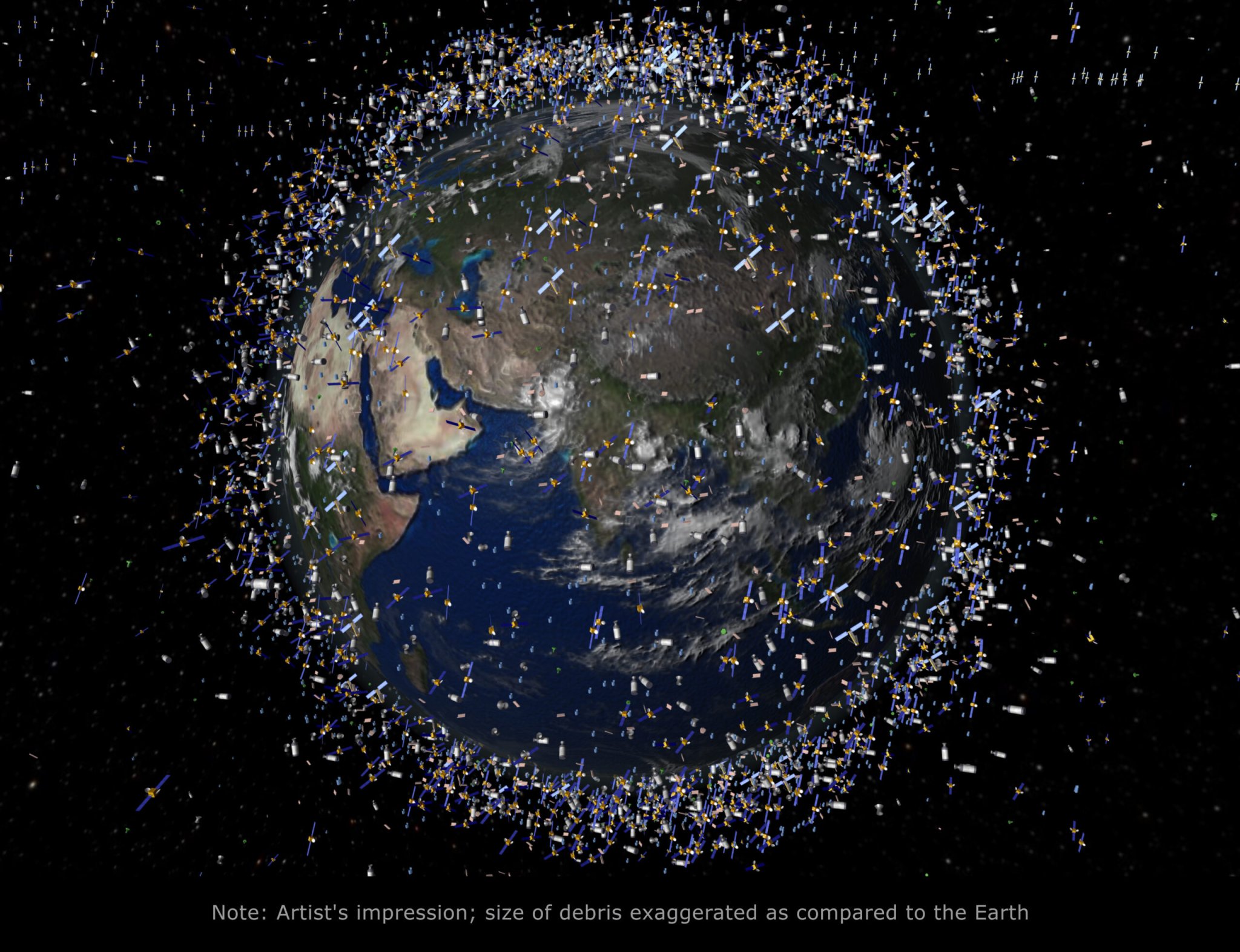

When it comes to solving the growing space junk problem, solutions range from catching it in giant nets to blasting it from orbit with lasers–and these are DARPA’s and NASA’s best plans, respectively. By contrast, the Naval Research Laboratory has a scheme that seems much more feasible, though fraught with negative consequences: using a cloud of tungsten dust to create atmospheric drag at orbital altitudes, deorbiting the thousands of pieces of tiny space junk whirling about the heavens.
The idea is simple enough: at altitudes below about 560 miles, the drag of the atmosphere naturally decays orbits, causing smaller bits of debris to slowly lose their orbits over the course of a couple of decades. But above that limit small debris–the stuff smaller than 10 centimeters that is very hard to track–can stay up there for decades or even centuries, threatening to damage satellites and spacecraft.
A researcher at the U.S. NRL suggests releasing a cloud of tungsten dust at about 680 miles up, creating a layer of particles that will completely shroud the planet. The particles themselves will be just 30 micrometers across, but because tungsten is nearly twice as dense as lead they will still add effective weight to any small debris they latch on to.
This, the thinking goes, will drag small debris pieces down below that 560 mile marker over a decade or two, where natural forces will take over and the debris will burn up, scrubbing orbital space clean of small debris over the next 25 or 35 years.
If you haven’t begun verbally objecting to this idea at this point, feel free to begin now. First of all, what effect is this tungsten cloud going to have on all of the equipment we don’t want to deorbit, like our functioning satellites? What about the delicate optics on our science satellites and the the solar panels that keep our communications satellites powered up? And, as Tech Review notes, might this tungsten layer obscure our view of the cosmos, reducing the power of our earth-based telescopes?
Put another way, this problem began when we started putting stuff in orbit that wasn’t naturally there before. And while you’re not going to get an argument against human space ambitions on this site, we do respect the notion that perhaps putting more junk into space isn’t the answer here.
But, while the NRL paper does concede the idea needs some finessing, the major objections can be managed for if not dealt with outright. Future satellites could be designed to either move above the cloud or to exist within it. And the tungsten shouldn’t adversely affect the ones that are already up there anyhow, it says, as they are adequately shielded for heat and radiation already.
We’re still not sold, but desperate times call for desperate measures. If the day comes when the space debris problem gets so bad our satellites are falling from the sky anyhow–as some say it will–a tungsten cloud may be a reasonable solution to scrub the skies clean.
Read the paper at arXiv.
